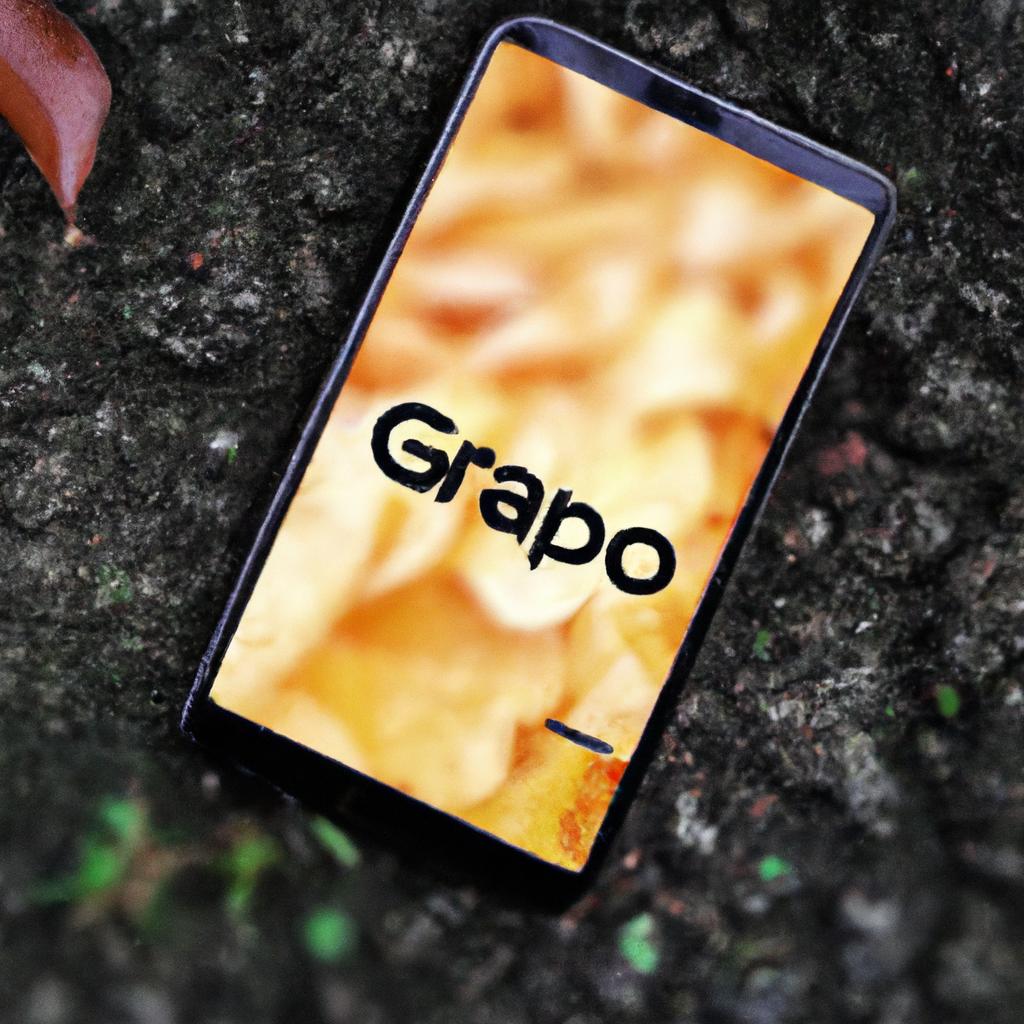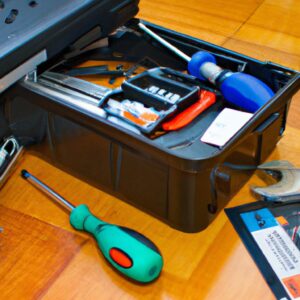Unlock Your Phone’s Photography Power: Tips & Tricks”

Introduction
Mastering smartphone photography can be a daunting task, but it doesn’t have to be! This guide will walk you through the basics of capturing great photos with your phone, and provide handy tips and tricks for taking your skills to the next level.
We’ll cover camera basics, like shutter speed, aperture, ISO, and white balance. We’ll take a look at techniques for managing different lighting conditions. Plus, we’ll explore accessories that can help make smartphone photography easier, and discuss tips for composition, setup, editing, printing, and sharing your photos.
By mastering the basics, you’ll be able to take fantastic photos with your smartphone that you can be proud of.
Understanding Camera Basics
The basics of photography can be daunting at first, but by brushing up on the fundamentals, you’ll be better prepared to take great photos with your smartphone. The four main camera settings that control the exposure of an image are shutter speed, aperture, ISO, and white balance.
Shutter Speed
Shutter speed measures the amount of time the camera sensor is exposed to light. A slow shutter speed will result in motion blur, while a fast shutter speed will help freeze the action and reduce blur. It is important to use the right shutter speed for the situation: a slower speed for nighttime or low-light photography and a faster speed for sports and wildlife.
Aperture
Aperture controls the depth of field, which affects how much of the image is in focus. A wide aperture (low f-stop number) has shallow depth of field and is best for creating pleasing backgrounds, while a narrow aperture (high f-stop number) has greater depth of field and is good for capturing sharper details across a wider area.
ISO
ISO measures the sensitivity of the camera sensor to light. A higher ISO setting can be used for dimly lit settings or to capture motion quickly, whereas a lower ISO allows for greater detail and less noise in well-lit situations.
White Balance
White balance controls the overall color of the image. Different lighting scenarios such as natural sunlight, tungsten, fluorescent lights, and more reach different parts of the color spectrum, which can greatly affect the look of a photo. Using the appropriate white balance setting helps create a more accurate representation of the scene.
Techniques for Lighting
Lighting is the key factor in taking stunning photographs with a smartphone. Every type of light has its own unique atmosphere. Natural light is often soft and directional, while artificial light can be harsher and less directional. Flash photography can produce natural looking photos when used properly.
When shooting in natural light, aim to take pictures during the golden hour (dawn and dusk) to get the best results. If you are working indoors, try to find ways to utilize natural light like shooting by windows, or use reflectors to create even and soft lighting. For more intense light, you may wish to try using flash photography, but make sure to be familiar with your device’s camera settings in order to avoid blinding your subjects.
Practical Smartphone Accessories
To take the best photograph possible, you may want to consider investing in a few smartphone accessories. These accessories provide a variety of features that can help improve your photography and make taking pictures easier.
Tripods are a great way to ensure sharp, still images. They also help to steady the phone when shooting long exposures and video. Lens adapters are available for many smartphones and allow you to attach different lens attachments, such as telephoto or wide-angle lenses.
Stabilizers are small devices that attach to the phone to help prevent accidental shakes and blurs. You can also use them to keep your smartphone steady when using long exposures or slow shutter speeds.
Other helpful accessories include attachable LED lights and filters for creative effects. Investing in these items can take your smartphone photography to the next level.
Composition Tips
When it comes to taking great photos with a smartphone, composition is key. It’s important to learn how to utilize the elements of composition to compose a more aesthetically pleasing image. Here are some basic composition tips that will help you take better photos:
- The Rule of Thirds – This technique divides your frame into thirds, both horizontally and vertically, creating four points. Place the subject of your photo in one of these points or along one of the lines to create a more visually appealing image.
- Leading Lines – Use objects within your composition to draw the eyes to the main subject. Examples of leading lines include roads, rivers, and buildings.
- Framing – Framing is when you use objects from the environment to create a “frame” for the main subject of your photo. Trees, windows, doorways, and arches are all great examples of framing.
- Isolation – To create emphasis on the subject of your photo, it’s often helpful to isolate it by using a shallow depth of field. This makes the subject stand out from the rest of the background.
By incorporating these tips into your photography, you’ll be able to take better photographs with more visual interest.
Setting Up for Success
Taking great photos is all about setting yourself up for success. In order to capture stunning smartphone images, it’s important to pay attention to details like shooting angles, backgrounds, and the amount of space in the frame. Experiment with different angles and perspectives to discover what works best for you when taking photos.
When thinking about your background, look for soft backgrounds that don’t draw attention away from the subject. Alternatively, you can place the subject within a more complex background that will add interest and dimension to the photo. Be conscious of how much space is in the frame—embrace negative space or fill the frame depending on the scene.
Using Editing Software
Editing software can be used to bring out the best in smartphone photos, and is an essential tool for mastering smartphone photography. There are many free and paid editing apps available, so it may take some experimentation before you find the one that works best for you. Popular choices for editing include Adobe Lightroom, Aviary Photo Editor, and Snapseed.
Editing software can help you adjust basic settings such as exposure, contrast, and saturation. It can also be used to add filters, frames, and effects to your photos. For more advanced editing, tutorials, presets, and LUTs can be used to help produce professional-looking results.
When using editing software, it’s important to be mindful of the resolution of your images. Smartphone screens are small compared to other device screens, so it’s important to use the correct resolution to ensure that your photos look great no matter where they’re viewed.
Print & Sharing Tips
When it comes to sharing your best smartphone photos, there are a few things you should keep in mind to protect your work and yourself. Firstly, be sure to add a watermark to your images, so that credit is properly given to you for your work. Consider creating a watermark logo for yourself, using a free online photo editing software provider such as Canva. Next, you should familiarise yourself with copyright laws to ensure you don’t accidentally infringe on someone else’s creative rights. Finally, it’s important to look into the terms of service for any social media platform before posting your photos.
Troubleshooting Tips for Smartphone Photography
As a smartphone photographer, you may run into a few common issues that can be easily solved. Here are some of the most common problems and how to fix them:
- Image is blurred or out of focus: This often happens when the subject of the image is too close to the lens, which causes the camera to focus on the wrong area. Try moving the camera further away from the subject and take the image again. You can also adjust the focus settings on your phone to get a sharper image.
- Exposure is too bright or too dark: If an image appears too bright or too dark, you can adjust the exposure setting on your camera. This will allow you to increase or decrease the brightness of the image.
- Image has a tinted appearance: If your photograph has a yellowish or greenish tint, it may be due to white balance settings that aren’t properly adjusted. To fix this issue, try adjusting the white balance setting on your phone.
These tips should help you troubleshoot any issues you may encounter while taking photos with your smartphone.
Conclusion
Mastering smartphone photography can be an enjoyable and rewarding experience. By taking the time to understand the basics of camera operation, experimenting with techniques for better lighting, accesorizing your phone for improved photography, and applying useful composition tips, you can take photos that really stand out. In addition, by using editing software and learning best practices for printing and sharing, you can make your photos even more impressive. Finally, knowing how to troubleshoot common problems can help you become a successful smartphone photographer.
With the right knowledge and practice, you can use your smartphone camera to capture stunning photos. So don’t be afraid to experiment, and keep learning! With each photo you take, you’ll gain more confidence and be able to capture better and better shots.
Resources for Mastering Smartphone Photography
Pursuing mastery of smartphone photography can be a daunting task, but thankfully there are plenty of resources available to help you along the way. In this section, we’ll highlight some of the most reputable and useful sources for learning about smartphone photography.
Blogs And Tutorials
Thanks to the proliferation of blogs dedicated to photography, there is no shortage of tutorials, tips, and advice for taking great photos with your phone. Many of these blogs are written by professional photographers, whose expertise can be invaluable for any aspiring smartphone snapper. For those hoping to learn the basics, tutorials can also be extremely useful for getting a firm grasp on the fundamentals.
Books & Magazines
If you prefer a more traditional form of learning, there are numerous printed books that offer detailed instructions for mastering smartphone photography. Additionally, there are numerous magazines geared towards mobile photographers, which can offer both inspiring stories as well as practical advice.
Online Forums & Communities
For those looking for more personalized advice or assistance, online forums and communities can be great resources. Not only are they filled with knowledgeable photographers who are willing to share their tips and tricks, but they can also provide an opportunity to network with other creatives.
YouTube Channels & Videos
If you’re more of a visual learner, YouTube can be an amazing resource for learning about smartphone photography. There are countless channels that offer tutorials, reviews, and videos about shooting with your phone. Plus, many channels feature guest experts who can provide even more valuable insights.
Credits
We would like to thank all the contributors who made this guide possible. A special thanks goes to all of those who donated their time, resources, and expertise to provide us with valuable insight into mastering smartphone photography. We deeply appreciate your support.
comments: 0






